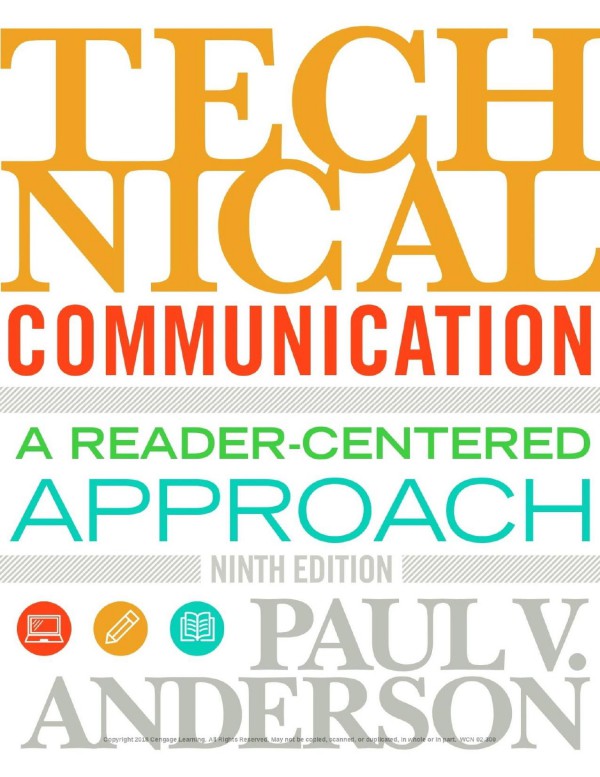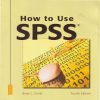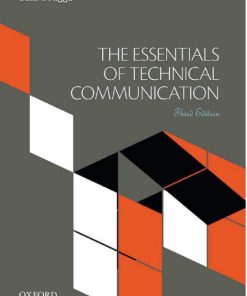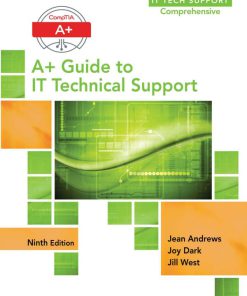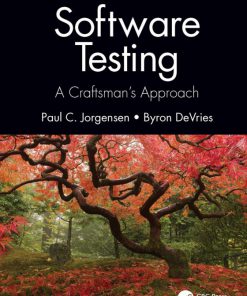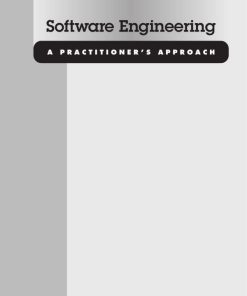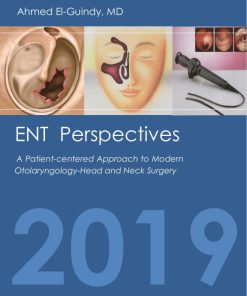Technical Communication A Reader Centered Approach 9th Edition by Paul Anderson 1305667883 9781305667884
$50.00 Original price was: $50.00.$25.00Current price is: $25.00.
Authors:Paul V. Anderson; Kerry Surman , Series:Mechanical engineering [67] , Tags:English; Computer & Internet; Mechanical; Electrical; Mechtronics; Management , Author sort:Anderson, Paul V. & Surman, Kerry , Ids:9780534274948 , Languages:Languages:eng , Published:Published:Nov 2007 , Publisher:Thomson Nelson , Comments:Technical Communication A Reader-Centered Approach (Instructor’s Edition) Edition: 9th
Technical Communication A Reader Centered Approach 9th Edition by Paul Anderson – Ebook PDF Instant Download/Delivery. 1305667883, 9781305667884
Full download Technical Communication A Reader Centered Approach 9th Edition after payment
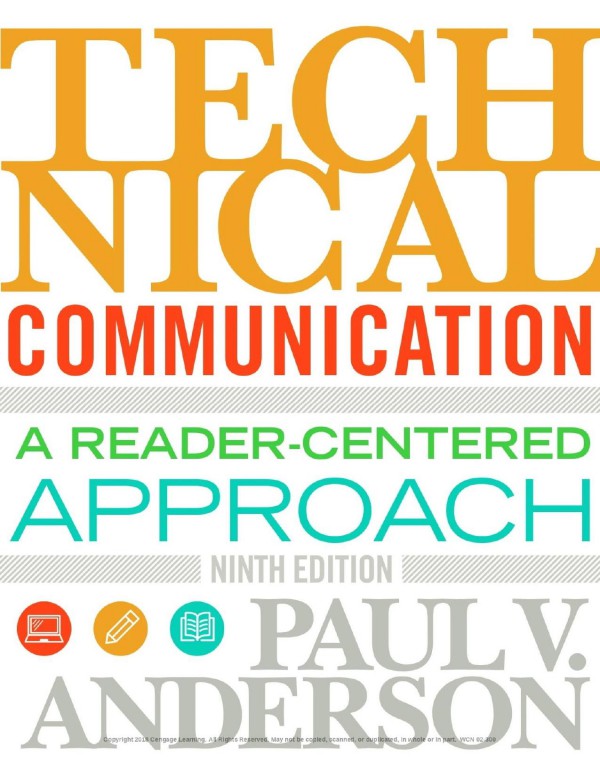
Product details:
ISBN 10: 1305667883
ISBN 13: 9781305667884
Author: Paul Anderson
Join the thousands of students who have used Anderson’s TECHNICAL COMMUNICATION: A READER-CENTERED APPROACH to develop the communication skills that employers consistently rank at the very top of the qualifications they seek in college graduates. You will learn to meet the special demands and expectations of the workplace by adapting and building on what you already know about writing and speaking effectively. Chapters guide you through the writing process and teach you how to communicate successfully at work, whether in print, orally, online, or through social media. Throughout, you’ll find easy-to-learn guidelines and thoroughly annotated examples of effective communications.
Technical Communication A Reader Centered Approach 9th Table of contents:
Part I. Introduction
Chapter 1. Communication, Your Career, and This Book
Communication Expertise Will Be Critical to Your Success
Learning Objectives for This Chapter
Characteristics of Workplace Writing
Serves Practical Purposes
Must Satisfy a Wide Variety of Readers, Sometimes in a Single Communication
Uses Distinctive Kinds of Communication
Shaped by Context
Adheres to Organizational Expectations
Created Collaboratively
Uses Social Media for Practical Purposes
At Work, Writing Is an Action
At Work, Writing Supports the Reader’s Action
The Two Essential Qualities of Effective Writing at Work: Usefulness and Persuasiveness
The Main Advice of This Book: Think Constantly about Your Readers
The Dynamic Interaction between Your Communication and Your Readers
Readers Construct Meaning
Readers’ Responses Are Shaped by the Situation
Readers React Moment by Moment
Six Reader-Centered Strategies You Can Begin Using Now
Communicating Ethically
How to Get Lasting Value from This Book and Your Course
Reflection
Framework
Developing the Habit of Reflecting
Section Content
Chapter 2. Overview of the Reader-Centered Approach: Writing for a Job
Understanding Your Reader
Your Three-Part Job Application
But First: Check Your Online Presence
How to Write an Effective Résumé
GUIDELINE 1. Address your résumé to specific employers
GUIDELINE 2. Define your résumé’s objectives by learning exactly what your reader wants
GUIDELINE 3. Think creatively about the ways your knowledge and experience match the qualifications the employer wants
GUIDELINE 4. Choose the type of résumé that will display your qualifications most effectively
GUIDELINE 5. Draft your résumé’s text to highlight the qualifications that will most appeal to the employer
GUIDELINE 6. Design your résumé’s appearance to support rapid reading, emphasize your qualifications, and look attractive
GUIDELINE 7. Revise your résumé to increase its impact and to eliminate errors and inconsistencies
Writer’s Tutorial. Using Tables to Design a Résumé
Make a Table to Serve as the Visual Framework for Your Résumé
Adapting Your Print Résumé or Online Submission for Computer Evaluation
Scannable Résumés
How to Create an Effective Professional Portfolio
How to Write an Effective Application Letter
GUIDELINE 1. Learn about each employer
GUIDELINE 2. Use or adapt the conventional organization for workplace letters
GUIDELINE 3. Revise your letter to polish the image it projects of you
Ethical Issues in the Job Search
Writing for Employment in Other Countries
Interviewing Effectively
Conclusion
Part II. The Reader-Centered Communication Process
Chapter 3. Defining Your Communication’s Goals
Your Goal: To Envision Your Reader’s Response to Each Specific Aspect of Your Communication
How to Determine What Your Communication Must Do to Be Useful
GUIDELINE 1. Describe your reader’s goal
GUIDELINE 2. Describe the tasks your reader will perform while reading your communication
GUIDELINE 3. Identify the information and ideas your reader will want your communication to provide
GUIDELINE 4. Describe the way your reader will look for the information
How to Determine What Your Communication Must Do to Be Persuasive
GUIDELINE 1. Describe your reader’s current attitudes and what you want them to be after reading your communication
GUIDELINE 2. Find out why your reader holds his or her current attitudes
How to Identify Factors that May Influence Your Reader’s Responses to Your Communication
GUIDELINE 1. Describe your reader’s professional role and characteristics
GUIDELINE 2. Describe your reader’s relevant personal characteristics
GUIDELINE 3. Describe the context in which your reader will read
GUIDELINE 4. Global Guideline: Describe your reader’s cultural characteristics
GUIDELINE 5. Learn who all your readers will be
Identify Any Constraints on the Way You Write
How to Treat Your Communication’s Stakeholders Ethically
GUIDELINE 1. Ethics Guideline: Identify your communication’s stakeholders
GUIDELINE 2. Determine how your communication’s stakeholders will view its impact on them
Putting Your Definition into Action: An Example
Conclusion
Chapter 4. Conducting Reader-Centered Research: Gathering, Analyzing, and Thinking Critically about Information
What to Focus on Learning in this Chapter
What Counts as Good Research in the Workplace?
How to Conduct Focused Research
How to Conduct a Thorough, Focused Search for Information and Ideas
GUIDELINE 1. Identify the full range of sources and methods that may provide helpful information
GUIDELINE 2. Use secondary sources your readers will find credible and unbiased
GUIDELINE 3. Use primary research methods in a credible and unbiased way
GUIDELINE 4. Gather information that can be analyzed in subgroups
GUIDELINE 5. Take careful notes
Intermission
How to Conduct Evidence-Based Analyses
GUIDELINE 1. Take another look at your research goals
GUIDELINE 2. Arrange your information in an analyzable form
GUIDELINE 3. Look for meaningful relationships in your results
How to Draw Evidence-Based Conclusions
GUIDELINE 1. Choose conclusions that align with your readers’ decisions and actions
GUIDELINE 2. Acknowledge uncertainty
GUIDELINE 3. Explain the significance of your conclusions to your readers
How to Make Evidence-Based Recommendations
How to Think Critically Throughout Your Research Process
GUIDELINE 1. Let go of your anchor
GUIDELINE 2. Value counterarguments, counterevidence, and exceptions
GUIDELINE 3. Avoid personal or organizational biases
How to Observe Intellectual Property Law and Document Your Sources
Intellectual Property Law
Ethical Guidelines for Documenting Sources
Conclusion
Chapter 5. Using Six Reader-Centered Research Methods
Exploring Your Own Memory and Creativity
Brainstorming
Draw a Picture of Your Topic
Cluster Sketch
Create and Study a Table or Graphic of Your Data
Searching the Internet
Using Search Engines and Internet Directories Effectively
Using Search Engines Efficiently
Evaluating Your Search Results
Keeping Records
Using Social Media
Examples of Social Media Used for Research
Using Social Media for Your Research
Using the Library
Obtaining Assistance from Reference Librarians
Using the Library Catalog
Conducting Subject and Word Searches
Refining and Extending Your Search
Using Databases
Reference Works
Government Documents
Interviewing
Preparing for an Interview
Writer’s Tutorial. Conducting Efficient Library Research
Finding Books
Conducting the Interview
Concluding the Interview
Conducting a Survey
Deciding What to Ask About
Writing the Questions
Selecting Your Respondents
Contacting Respondents
Interpreting Your Results
Chapter 6. Organizing Reader-Centered Communications
Include everything your reader needs—and nothing else GUIDELINE 1
GUIDELINE 1. Include everything your reader needs—and nothing else
GUIDELINE 2. Group together the items your reader will use together
GUIDELINE 3. Give the bottom line first
GUIDELINE 4. Adapt an appropriate superstructure or other pattern familiar to your reader
GUIDELINE 5. Organize hierarchically
GUIDELINE 6. Plan your graphics
GUIDELINE 7. Outline, if this will be helpful
GUIDELINE 8. Treat your communication’s stakeholders ethically
How to Check the Usefulness and Persuasiveness of Your Organization
Conclusion
Chapter 7. Drafting Reader-Centered Communications
The Similarities among Paragraphs, Sections, Chapters, and Short Communications
Starting Segments
GUIDELINE 1. Begin by announcing your topic
GUIDELINE 2. Present your generalizations before your details
Draft Clear, Coherent, and Persuasive Segments
GUIDELINE 1. Move from most to least important or impressive
GUIDELINE 2. Write segments using patterns familiar to your readers
GUIDELINE 3. Smooth the flow of thought from sentence to sentence
GUIDELINE 4. Present background information where it will most help your readers
Help Your Readers See the Organization of Your Communication
GUIDELINE 1. Use headings
GUIDELINE 2. Use the visual arrangement of your text
GUIDELINE 3. Use forecasting statements
GUIDELINE 4. Use transitions
Global Guideline: Adapt to Your Reader’s Cultural Background
Write a Beginning that Motivates Your Readers to Read
GUIDELINE 1. Announce your topic and its benefit to your readers
GUIDELINE 2. Refer to your readers’ request
GUIDELINE 3. Offer to help your readers solve a problem
GUIDELINE 4. Adjust the length of your beginning to the situation
GUIDELINE 5. Adapt your beginning to your readers’ cultural background
How to Write Endings that Support Your Communication’s Goals
GUIDELINE 1. Help your readers remember what you most want them to take away from your communication
GUIDELINE 2. Help your readers know what to do next
GUIDELINE 3. Follow applicable social conventions
GUIDELINE 4. After you’ve made your last point, stop
Ethics Guideline: Examine the Human Consequences of What You’re Drafting
Mining Accidents
Writing with Awareness of Human Consequences
Section Content
Chapter 8. Using Eight Reader-Centered Patterns for Presenting Information and Ideas
Grouping Items Formally (Formal Classification)
How Formal Classification Works
Grouping Items Informally (Informal Classification)
Example of Informal Classification
Comparing Alternatives
Two Patterns for Organizing Comparisons
When to Use Each Pattern
Describing an Object (Partitioning)
Example: Partitioning a Car
Description Organized by Partitioning
Describing a Process (Segmenting)
Principles of Classification for Segmenting
Describing a Cause-and-Effect Relationship
Helping Readers Understand a Cause-and-Effect Relationship
Persuading Readers that a Cause-and-Effect Relationship Exists
Logical Fallacies Common in Arguments about Cause and Effect
Describing a Problem and Its Solution
Proposing the Solution to a Problem
Reporting on a Past Problem-Solving Project
Combining Organizational Patterns
Section Content
Chapter 9. Persuading Your Readers
The Competitive and Collaborative Uses of Persuasion
To Persuade, Influence Your Readers’ Attitudes
Focus on Your Readers’ Goals and Values
Organizational Goals
Values-Based Goals
Personal Growth and Achievement Goals
Reason Soundly
GUIDELINE 1. Present sufficient and reliable evidence
GUIDELINE 2. Explicitly justify your line of reasoning
GUIDELINE 3. Respond to—and learn from—your readers’ concerns and counterarguments
Build an Effective Relationship with Your Readers
GUIDELINE 1. Establish your credibility
GUIDELINE 2. Present yourself as a partner, not a critic
Organize to Create a Favorable Response
GUIDELINE 1. Choose between direct and indirect organizational patterns
GUIDELINE 2. Create a tight fit among the parts of your communication
Introduce Emotional Arguments if Relevant
Global Guideline: Adapt to Your Readers’ Cultural Background
Ethics Guideline: Persuade Ethically
Conclusion
Chapter 10. Developing an Effective, Professional Style
Create an Effective, Professional Voice
GUIDELINE 1. Find out what’s expected
GUIDELINE 2. Consider the roles your voice creates for your readers and you
GUIDELINE 3. Consider how your attitude toward your subject will affect your readers
GUIDELINE 4. Say things in your own words
GUIDELINE 5. Global Guideline: Adapt your voice to your readers’ cultural background
GUIDELINE 6. Ethics Guideline: Avoid stereotypes
How to Construct Sentences Your Reader Will Find Easy to Understand, Easy to Remember, and Interesting
GUIDELINE 1. Simplify your sentences
GUIDELINE 2. Put the action in verbs
GUIDELINE 3. Use the active voice unless you have a good reason to use the passive voice
GUIDELINE 4. Emphasize what’s most important
GUIDELINE 5. Vary your sentence length and structure
GUIDELINE 6. Global Guideline: Adapt your sentences for readers who are not fluent in your language
Choose Words that Convey Your Meaning Clearly and Precisely
GUIDELINE 1. Use concrete, specific words
GUIDELINE 2. Use specialized terms when—and only when—your readers will understand them
GUIDELINE 3. Use words accurately
GUIDELINE 4. Choose plain words over fancy ones
GUIDELINE 5. Choose words with appropriate associations
GUIDELINE 6. Global Guideline: Consider your readers’ cultural background when choosing words
GUIDELINE 7. Ethics Guideline: Use inclusive language
Conclusion
Chapter 11. Writing Reader-Centered Front and Back Matter
How to Plan Front and Back Matter
GUIDELINE 1. Review the ways your readers will use the communication
GUIDELINE 2. Review your communication’s persuasive goals
GUIDELINE 3. Find out what’s required
GUIDELINE 4. Find out what’s expected
A Word about Conventions and Local Practice
How to Write a Reader-Centered Transmittal Letter
How to Write Reader-Centered Front Matter
Cover
Title Page
Summary or Abstract
Table of Contents
Lists of Figures and Tables
How to Write Reader-Centered Back Matter
Appendixes
References List, Endnotes, or Bibliography
Glossary and List of Symbols
Index
Chapter 12. Creating Reader-Centered Graphics
Identify Places Where Graphics Would Increase Your Communication’s Effectiveness
GUIDELINE 1. Find places where graphics would make your communication easier to use
GUIDELINE 2. Find places where graphics can increase your communication’s persuasiveness
Choose the Type of Graphic Best Matched to Your Communication’s Goals
GUIDELINE 1. Consider your readers’ tasks
GUIDELINE 2. Consider your readers’ attitudes
Make Your Graphics Easy for Your Readers to Understand and Use
GUIDELINE 1. Design your graphics to support your readers’ tasks
GUIDELINE 2. Consider your readers’ knowledge and expectations
GUIDELINE 3. Simplify your graphics
GUIDELINE 4. Label the important content clearly
GUIDELINE 5. Provide informative titles
Use Color to Support Your Message
Use Graphics Software and Existing Graphics Effectively
How to Integrate Your Graphics with Your Text
GUIDELINE 1. Introduce your graphics in your text
GUIDELINE 2. Place your graphics near your references to them
GUIDELINE 3. State the conclusions you want your readers to draw
GUIDELINE 4. When appropriate, include explanations in your figures
Global Guideline: Adapt Your Graphics When Writing to Readers in Other Cultures
Use Graphics Ethically
GUIDELINE 1. Ethics Guideline: Avoid graphics that mislead
Ethical bar Graphs and Line Graphs
Ethical Pictographs
Ethical Use of Color
GUIDELINE 2. Ethics Guideline: Obtain permission and cite the sources for your graphics
Conclusion
Chapter 13. Creating Eleven Types of Reader-Centered Graphics
Writer’s Tutorial. Tables
How to Create Formal Tables
How to Create Informal Tables
How to Create Tables that Contain Only Text
Writer’s Tutorial. Line Graphs
How to Create Line Graphs
How to Create Line Graphs Comparing Trends
How to Create Line Graphs Showing Interactions among Variables
Writer’s Tutorial. Bar Graphs
How to Create bar Graphs
How to Create bar Graphs Showing Trends
How to Create Multibar Graphs Showing Several Comparisons
More Types of bar Graphs
Writer’s Tutorial. Pictographs
How to Create Pictographs
Writer’s Tutorial. Pie Charts
How to Create Pie Charts
How to Avoid Distortion in Pie Charts
Writer’s Tutorial. Photographs
How to Create Photographs that Are Useful to Your Readers
How to Use Software to Create Reader-Centered Photographs
Writer’s Tutorial. Drawings
How to Create Drawings
How to Create Drawings that Show How to Do Something
How to Create Drawings Showing Appearance and Structure
Writer’s Tutorial. Screenshots
How to Create Screenshots
Helping Readers Locate an On-Screen Item
Guiding Your Readers through a Sequence of Steps
Writer’s Tutorial. Flowcharts
How to Create Flowcharts
Writer’s Tutorial. Organizational Charts
How to Create Organizational Charts
How to Create Organizational Charts that Show Reporting Lines
Writer’s Tutorial. Schedule Charts
How to Create Schedule Charts
How to Create Gantt Charts
Chapter 14. Designing Reader-Centered Pages and Documents
Design Elements of a Communication
Help Your Reader See How Your Communication Is Organized
GUIDELINE 1. Create a grid to serve as the visual framework for your page
Writer’s Tutorial. Designing Grid Patterns for Print
Basic Designs
Variations on Basic Designs
Introduction to Guidelines 2, 3, 4
GUIDELINE 2. Align related elements with one another
GUIDELINE 3. Group related items visually
GUIDELINE 4. Use contrast to establish hierarchy and focus
Other Visual Organizers
Use Page Design to Unify a Long Communication Visually
Using Word-Processing Programs to Achieve Consistency
Select Type that Is Easy for Your Readers to Read
Choose the Physical Characteristics That Support Your Communication’s Goals
Conclusion
Chapter 15. Revising Your Drafts
The Three Activities of Revising
Identify Ways to Improve Your Draft
GUIDELINE 1. Check from your readers’ point of view
GUIDELINE 2. Check from your employer’s point of view
GUIDELINE 3. Distance yourself from your draft
GUIDELINE 4. Read your draft more than once, changing your focus each time
GUIDELINE 5. Use computer aids to find (but not cure) possible problems
GUIDELINE 6. Take special care with social media
GUIDELINE 7. Ethics Guideline: Consider the stakeholders’ perspective
Obtain Truly Helpful Advice from People Who Review Your Drafts—And Give Good Advice when You Are Reviewing Someone Else’s Draft
GUIDELINE 1. Discuss the objectives of the communication and the review
GUIDELINE 2. Build a positive interpersonal relationship with your reviewers or writers
GUIDELINE 3. Rank suggested revisions—and distinguish matters of substance from matters of taste
GUIDELINE 4. Explore the reasons for your suggestions
GUIDELINE 5. Present your suggestions in the way that will be most helpful to the writer
GUIDELINE 6. Ethics Guideline: Review from the stakeholders’ perspective
Writer’s Guide for Reviewing
Produce the Maximum Improvement in Limited Time
GUIDELINE 1. Adjust your effort to the situation
GUIDELINE 2. Make the most significant revisions first
GUIDELINE 3. To revise well, follow the guidelines for writing well
GUIDELINE 4. Revise to learn
Conclusion
Chapter 16. Testing Your Drafts for Usefulness and Persuasiveness
The Logic of Testing
How to Define the Goals of Your Test
How to Choose Test Readers
How to Test Your Draft’s Usefulness
GUIDELINE 1. Ask your test readers to use your draft the same way your target readers will
GUIDELINE 2. Interview your test readers after they have used your draft
GUIDELINE 3. Minimize the impact of your presence
How to Test Your Draft’s Persuasiveness
GUIDELINE 2. Use Likert-scale questions to evaluate persuasiveness
GUIDELINE 2. Avoid biasing your test results
How to Interpret the Results of Your Test
How to Test Communications You Write to Readers in Another Culture
How to Treat Test Readers Ethically
Conclusion
Part III. Applications of the Reader-Centered Approach
Chapter 17. Creating Communications with a Team
Varieties of Team Structures
Keys to Team Success
Treat Other Team Members with Sensitivity and Respect
Develop a Shared Understanding of Team Goals and Procedures
GUIDELINE 1. Create a shared understanding of the communication’s goals
GUIDELINE 2. Develop and share a detailed plan for the finished communication
GUIDELINE 3. Make a project schedule
Make Team Meetings Efficient and Highly Productive
GUIDELINE 1. Set and follow an agenda
GUIDELINE 2. Encourage discussion, debate, and diversity of ideas
GUIDELINE 3. Take special care when revising drafts
GUIDELINE 4. Global Guideline: Help your team work across cultural differences
Use Internet and Cloud Technology for Drafts
GUIDELINE 1. Choose the computer technology best suited to your team’s project
GUIDELINE 2. Use social media to your advantage
GUIDELINE 3. For virtual teams, foster personal relationships and conversational interchanges
Learning Team Skills through Feedback
Section Content
Chapter 18. Creating and Delivering Listener-Centered Oral Presentations
Define Your Presentation’s Objectives
GUIDELINE 1. Determine who your listeners are, what task they want to perform, and what they need and expect from you
GUIDELINE 2. Define your persuasive goals
Select the Oral and Visual Media Most Likely to Achieve Your Objectives
GUIDELINE 1. Choose the type of oral delivery by considering your audience and purpose
GUIDELINE 2. Choose your visual medium by considering your audience, topic, and purpose
Help Your Listeners Fully Understand and Remember Your Main Points
GUIDELINE 1. Identify the main points you want to make
GUIDELINE 2. Create a simple structure built around your major points
GUIDELINE 3. Help your listeners follow the structure of your presentation
GUIDELINE 4. Make easy-to-understand visuals
GUIDELINE 5. Plan the verbal and visual parts of your presentation as a single package
GUIDELINE 6. Adapt to your listeners’ cultural background
Maintain Your Listeners’ Attention and Goodwill
GUIDELINE 1. Speak in a conversational style
GUIDELINE 2. Establish and maintain a personal connection with your audience
GUIDELINE 3. Respond effectively to your audience’s comments and questions
GUIDELINE 4. Rehearse
GUIDELINE 5. Accept your nervousness—and work with it
Make Effective Team Presentations
GUIDELINE 1. Plan thoroughly as a team
GUIDELINE 2. Maintain overall consistency while allowing for individual differences
GUIDELINE 3. Make smooth transitions between speakers
GUIDELINE 4. Rehearse together
Conclusion
Chapter 19. Managing Client and Service-Learning Projects
Project Management and Client Communication
Establish a Detailed, Mutual Understanding of All Important Aspects of the Project
GUIDELINE 1. Determine what your client wants and why
GUIDELINE 2. Develop your own assessment of the situation
GUIDELINE 3. Define what you will do for your client and how you will do it
GUIDELINE 4. Give your client a written proposal—and ask for a written agreement
Maintain a Productive Relationship with Your Client throughout Your Project
GUIDELINE 1. Communicate candidly with your client during the project
GUIDELINE 2. Advocate and educate, but defer to your client
Hand off Your Project in a Way Your Client Will Find Helpful
Conclusion
Chapter 20. Creating Reader-Centered Websites and Professional Portfolios
How to Gain the Most Value from this Chapter
This Chapter’s Example: Digital Portfolio Websites
Define Your Website’s Goals
Writer’s Tutorial. Creating a Website Using Tables
Define Your Website’s Goals
Plan Your Website
Make Your Website Folder
Create Your Home Page
Create One Other Page
Open Your Home Page for Editing
Enter Information into Your Home Page
Enter Information into Your Topic Pages
Finish Your Pages
Test Your Website
Research to Identify Useful, Persuasive Content
Organize to Help Your Readers Quickly Find What They Are Looking for
Draft Your Website To Be Easy To Use, Persuasive, and Attractive
GUIDELINE 1. Include a variety of navigational guides in your web pages and website
GUIDELINE 2. Design your pages so readers can immediately understand their organization
GUIDELINE 3. Make your text easy to read
GUIDELINE 4. Unify your website verbally and visually
Writer’s Tutorial. Designing Grid Patterns for Web Pages
Basic Designs
Elaborate Designs
Design Your Website for Diverse Readers
GUIDELINE 1. Ethics Guideline: Construct your website for use by readers with disabilities
GUIDELINE 2. Global Guideline: Design your website to serve readers from countries and cultures other than your own
Follow Ethical and Legal Practices concerning Your Website’s Content
GUIDELINE 1. Observe copyright law and acknowledge your sources
GUIDELINE 2. Provide thorough, accurate information that won’t harm others
Writer’s Guide and Other Resources
Section Content
Chapter 21. Writing Reader-Centered Correspondence: Letters, Memos, and Emails
Use the Appropriate Level of Formality
Take a Reader-Centered “You Attitude”
Apply Reader-Centered Advice from Other Chapters to Your Correspondence
GUIDELINE 1. State your main point up front—unless you expect your readers to react negatively
GUIDELINE 2. Keep it short
GUIDELINE 3. Use headings and lists
GUIDELINE 4. Avoid communication clichés
GUIDELINE 5. Global Guideline: Learn the customs of your readers’ culture
GUIDELINE 6. Follow format conventions and other customs
Writing Reader-Centered Letters
Conventional Format for Letters
Writer’s Tutorial. Writing Letters
Letter Printed on Plain Paper (Not Letterhead)
Writing Reader-Centered Memos
Memo Format
Special Considerations for Writing Memos
Writing Reader-Centered Email
Writer’s Tutorial. Writing Memos
Second and Subsequent Pages
Writer’s Tutorial. Writing Email
Chapter 22. Writing Effectively on Social Media at Work
Kinds of Social Media Used at Work
Reader-Centered Guidelines for Writing Effectively on Social Media
GUIDELINE 1. Understand your readers and their reasons for reading
GUIDELINE 2. Follow local conventions for the social media you are using
Applying the General Guidelines for Three Major On-the-Job Writing Tasks
Writing to Obtain Information
Sharing Information
Using Social Media to Help a Team Work Effectively and Efficiently
Ethical Guidelines for Using Social Media
Section Content
Chapter 23. Writing Reader-Centered Proposals
The Variety of Proposal-Writing Situations
Example Situation 1
Example Situation 2
How Readers Use and Evaluate Proposals
Superstructure for Proposals
Crafting the Major Elements of a Proposal
Introduction
Problem
Objectives
Solution
Method
Resources
Schedule
Qualifications
Management
Costs
Bringing It All Together
Sample Proposals
Writer’s Guides and Other Resources
Chapter 24. Writing Reader-Centered Empirical Research Reports
Typical Writing Situations
How Readers Use and Evaluate Empirical Research Reports
Superstructure for Empirical Research Reports
Crafting the Major Elements of an Empirical Research Report
Introduction
Objectives of the Research
Method
Results
Discussion
Conclusions
Sample Empirical Research Reports
Writer’s Guides and Other Resources
Chapter 25. Writing Reader-Centered Feasibility Reports
How Readers Use and Evaluate Feasibility Reports
Superstructure for Feasibility Reports
Conducting Research for Feasibility Reports
Organizing Feasibility Reports
Crafting the Major Elements of a Feasibility Report
Introduction
Criteria
Method
Overview of Alternatives
Evaluation of the Alternatives
Conclusions
Sample Feasibility Report
Writer’s Guides and Other Resources
Chapter 26. Writing Reader-Centered Progress Reports
Typical Writing Situations
Readers’ Concern with the Future
How Readers Use and Evaluate Progress Reports
Superstructure for Progress Reports
Crafting the Major Elements of a Progress Report
Introduction
Facts and Discussion
Conclusions
Tone in Progress Reports
Writer’s Guide and Other Resources
Chapter 27. Writing Reader-Centered Instructions
How Readers Use and Evaluate Instructions
Superstructure for Instructions
Guiding You through the Process of Preparing Instructions
Defining Your Instruction’s Goals
Planning
Drafting and Revising
Crafting the Major Elements of Instructions
Introduction
Description of the Equipment
List of Materials and Equipment Needed
Directions
Troubleshooting
Physical Construction of Instructions
Sample Printed Instructions
Web Page Instructions
Video Instructions
Writer’s Guides and Other Resources
Style and Usage Guide to Accompany Paul V. Anderson’s: Technical Communication a Reader-Centered Approach
Preface
Subject Table of Contents
Abbreviations
Names and Titles
Time and Dates
Organizations
Research
Measurements
Business
Acronyms and Initialisms
Active and Passive Voice
Adapt, Adopt
Addresses
Affect, Effect
Already, All Ready
All Right, All-Right, Alright
Altogether, All Together
Among, Between
Amount, Number
And/Or
Apostrophes
Awkward Constructions
Brackets
Capital, Capitol
Capitalization
Case
Cite, Site, Sight
Colons
Commas
Comma Splices
Comparative and Superlative Degrees (of Adjectives and Adverbs)
Complement, Compliment
Continual, Continuous
Contractions
Criterion, Criteria
Dangling modifiers
Dashes
Dates
Different from, Different than
Ellipsis Points
Eminent, Imminent
Exclamation Points
Explicit, Implicit
Fewer, Less
First, Firstly
Foreword, Forward
Fragments
Fused Sentences
Good, Well
Hyphens
Imply, Infer
Insure, Ensure, Assure
Italics
Its, It’s
Lay, Lie
Like, as
Mean, Median
Misplaced Modifiers
Miss, Mr., Mrs., Ms.
Numbers
Parallelism
Parentheses
Passive Voice
Periods
Phenomenon, Phenomena
Principal, Principle
Pronoun-Antecedent Agreement
Pronoun Reference
Question Marks
Quotation Marks
Quotations
Semicolons
Sentence Types
Set, Sit
Sexist and Discriminatory Language
Shifts
Slashes
Specialized Terms
Stationary, Stationery
Subject-Verb Agreement
Superlative Degree
There, Their, They’re
Who, Which, and That
Who’s, Whose
Exercises
Apostrophes
Awkward Constructions
Capitalization
Case
Colons, Dashes, and Parentheses
Commas
Comma Splices
Dangling Modifiers
Fragments
Fused Sentences
Misplaced Modifiers
Parallelism
Periods, Question Marks, and Exclamation Points
Pronoun-Antecedent Agreement
Pronoun Reference
Quotations and Quotation Marks
Semicolons
Sentence Types
Sexist and Discriminatory Language
Shifts
Subject-Verb Agreement
Solutions
Apostrophes
Awkward Constructions
Capitalization
Case
Colons, Dashes, and Parentheses
Commas
Comma Splices
Dangling Modifiers
Fragments
Fused Sentences
Misplaced Modifiers
Parallelism
Periods, Question Marks, and Exclamation Points
Pronoun-Antecedent Agreement
Pronoun Reference
Quotations and Quotation Marks
Semicolons
Sentence Types
Sexist and Discriminatory Language
Shifts
Subject-Verb Agreement
Just in Time Quick Reviews
Quick Review: Understanding Writing Assignments
Understanding Context, Purpose, and Audience
Reading and Analyzing the Assignment
Quick Review: Understanding the Rhetorical Situation
Define and Consider Purpose
Define and Consider Audience
Define and Consider Context
Quick Review: Writing Thesis Statements
Generating and Narrowing Ideas for a Topic
Developing a Strong Thesis Statement
Quick Review: Organizing Your Essay
Patterns of Organization
Quick Review: Writing Introductions and Conclusions
Writing an Effective Introduction
Writing an Effective Conclusion
Quick Review: Reading Critically
Read Actively
Read Critically
Quick Review: Understanding Fact and Opinion
Facts: Reading and Writing
Opinions: Reading and Writing
Quick Review: Quoting, Paraphrasing, and Summarizing
Avoiding Plagiarism
Quoting
Paraphrasing
Summarizing
Quick Review: Writing Topic Sentences
General versus Specific Statements
Generate and Narrow Ideas for a Topic
Develop a Strong Topic Sentence
Topic Sentences Work Together in Essays
Quick Review: Including Supporting Ideas
Types of Support
Generating Support
Supporting a Topic Sentence in a Paragraph
Supporting a Thesis Statement in an Essay
Quick Review: Writing Unified Paragraphs
Ensuring Paragraph Unity
Quick Review: Writing Coherent Paragraphs
Organizational Strategies
Transitional Words and Phrases
Key Words
Pronouns
Quick Review: Varying Sentence Structure
Sentence Types
Coordination: Combining Ideas of Equal Importance
Combining Sentences by Using Coordinating Conjunctions
Combining Sentences by Using Conjunctive Adverbs
Subordination: Combining Ideas of Unequal Importance
Combining Sentences by Using Participial Phrases
Avoid Creating Dangling Modifiers
Quick Review: Making Subjects and Verbs Agree
Ensuring Subject-Verb Agreement
Quick Review: Revising Sentence Fragments
Identifying Fragments
How to Correct Sentence Fragments
Quick Review: Revising Run-On Sentences and Comma Splices
Identifying and Correcting Run-On Sentences
Identifying and Correcting Comma Splices
Quick Review: Choosing Appropriate Language
Selecting and Maintaining Appropriate Tone
Avoiding Slang, Vulgar Language, Jargon, and Colloquialisms
Avoiding Sexist Language
Avoiding Clichés
Avoiding Contractions and Nonstandard Spelling
Quick Review: Using Concise Language
Eliminate Redundant Words and Phrases
Express Your Thoughts Clearly and Directly
Combine Closely Related Sentences
Quick Review: Understanding Sound Alike and Look Alike Words
Tips for Spelling Homonyms Correctly
Ten Most Commonly Confused Sets of Homonyms
Additional Commonly Confused Homonyms
Quick Review: Using Commas
Commas in Compound Sentences
Commas in a Series
Commas with Introductory Material
Commas with Interrupters
Commas with Dialogue or Quotations
Commas in Addresses, Dates, Letters, Numbers, and Titles
Quick Review: Using Capital Letters
Rules for Capitalization
Appendix A. Documenting Your Sources
Appendix B. Reflecting for Transfer
People also search for Technical Communication A Reader Centered Approach 9th:
technical communication is writer centered
technical communication is reader centered
technical communication a reader-centered approach by paul v. anderson
echnical communication a reader-centered approach

